Fish Line And Hook Item Number: E2239-0 from the National Museum of Natural History
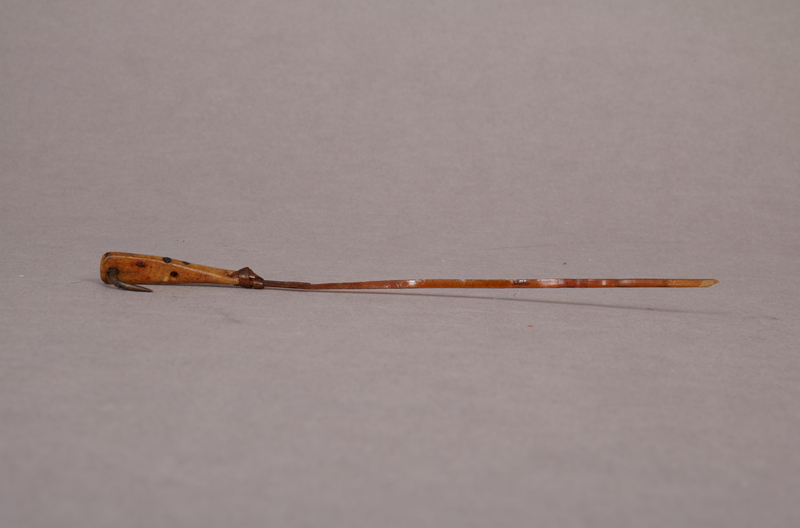
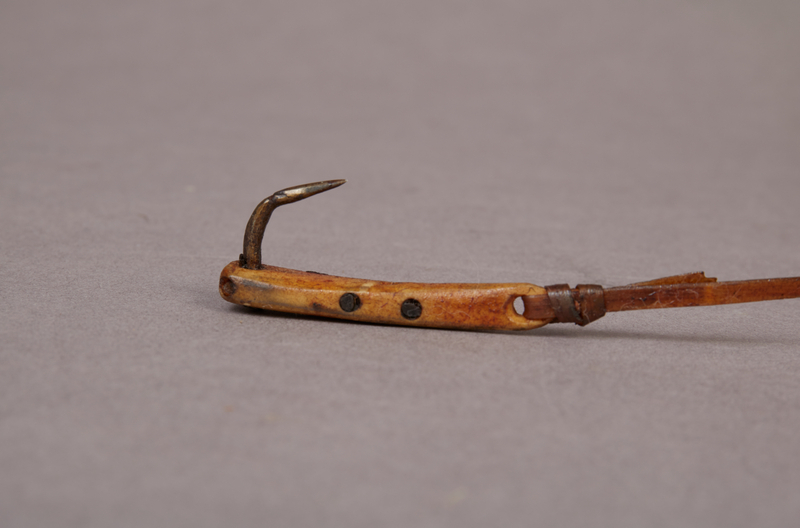
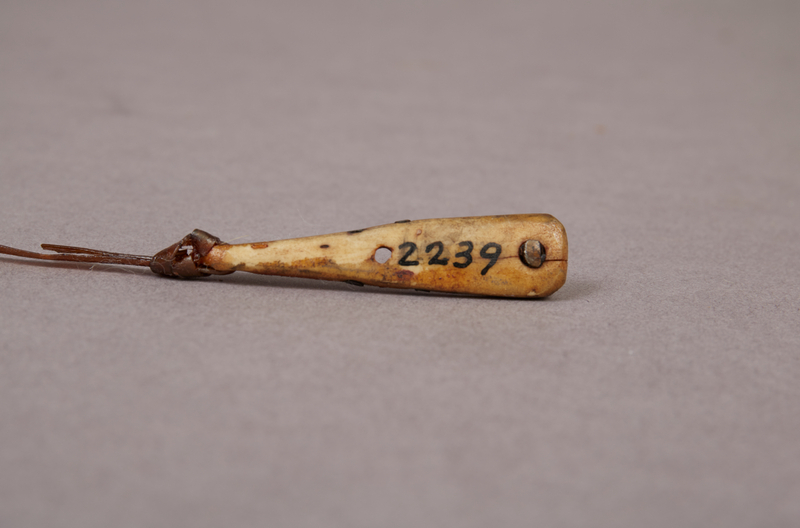
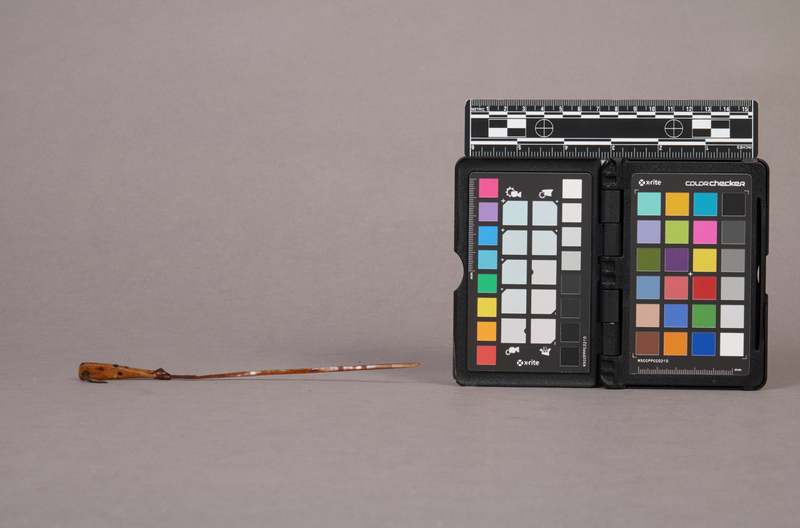

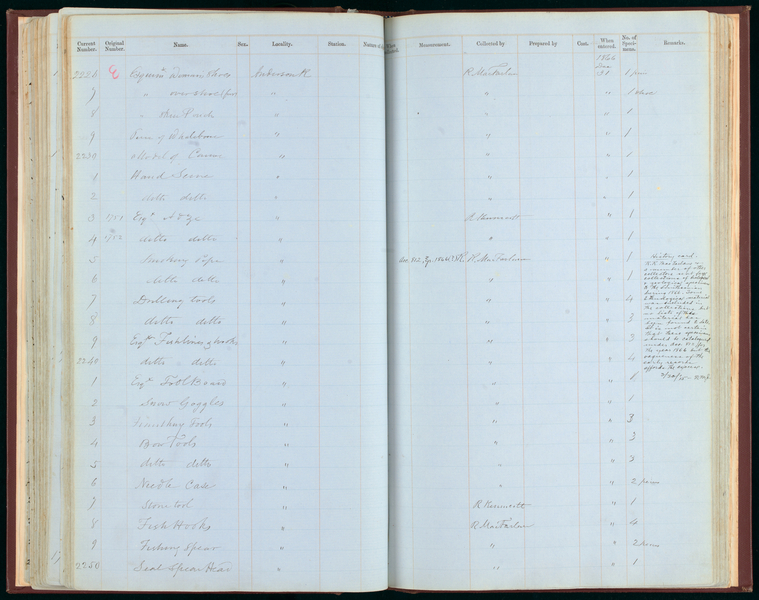
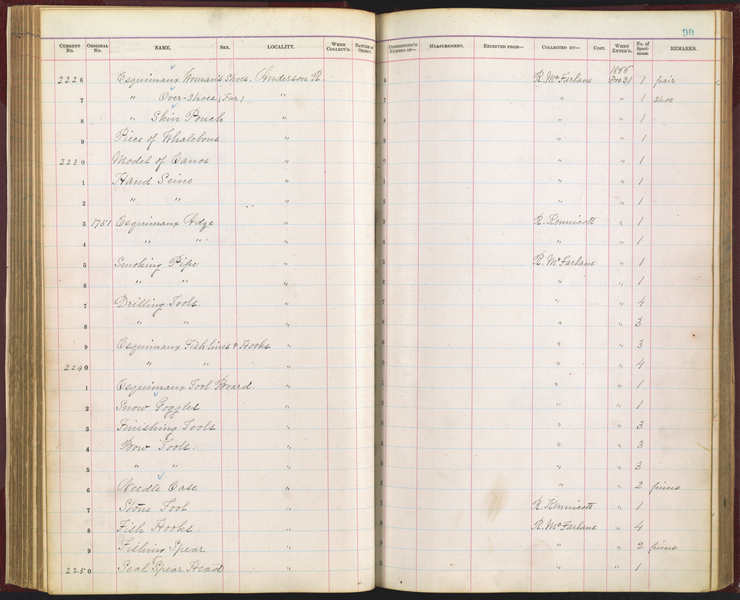
Notes
FROM CARD: "WOODEN OR BONE SHANKS, THROUGH THE LOWER END OF WHICH ARE PASSED BARBLESS IVORY, IRON, OR COPPER POINTS. GANGINGS MADE OF SPLIT QUILLS, WALRUS WHISKER, OR WHALEBONE; SOME HAVE STONE OR IVORY SINKERS WITH SNOODS; LINES MADE OF WALRUS HIDE, WHALEBONE, ETC. CAT. NO. 2239."Source of the information below: Inuvialuit Pitqusiit Inuuniarutait: Inuvialuit Living History, The MacFarlane Collection website, by the Inuvialuit Cultural Resource Centre (ICRC), Inuvik, N.W.T., Canada (website credits here http://www.inuvialuitlivinghistory.ca/posts/12 ), entry on this artifact http://www.inuvialuitlivinghistory.ca/items/212 , retrieved 1-3-2020: The shank of this fish lure is made from antler. It has a length of baleen line tied through two holes at the narrow end and an iron barb is set into a drilled hole at the broader end of the shank. Two pieces of copper decoration are set into shallow holes drilled on each edge of the shank, and a hole that has been drilled through the face of the shank might at one time also held a decorative insert. This fish lure appears to be one of a set of lures that were acquired as a set. More information here: http://www.inuvialuitlivinghistory.ca/item_types/21: Fishing tackle was used for catching fish in rivers and streams during the open water season, and for jigging through holes chiseled through ice in winter and spring. Fishing tackle in the MacFarlane Collection includes fishing rods (iqaluksiun) with lines (ipiutaq) made from baleen, and bone and antler lures (niksik) with iron hooks. Less commonly, fishhooks were made from wood.
Item History
- Made in Northwest Territories, Canada
- Collected in Northwest Territories, Canada
- Received from Roderick R. MacFarlane on December 21, 1866
What
- Name
- Fish Line And Hook
- Identification Number
- E2239-0
- Type of Item
- fish hook
Who
- Culture
- Eskimo, Inuit and Inuvialuk
- Received from
- Roderick R. MacFarlane
Where
- Holding Institution
- National Museum of Natural History
- Made in
- Northwest Territories, Canada
- Collected in
- Northwest Territories, Canada
When
- Acquisition Date
- on December 21, 1866
Other
- Accession Number
- 66A00090